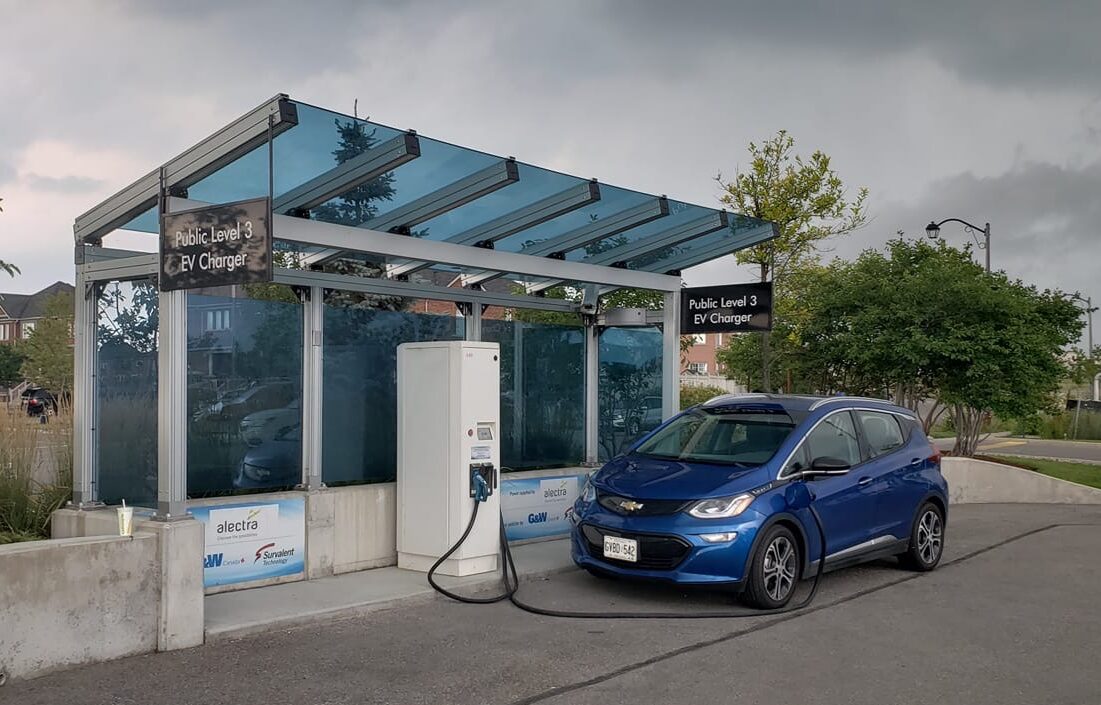
EVs: Frequently Asked Questions
By Tom Coleman
Overview: New models of EVs have sufficient battery range for most people, are more efficient and perform better, and they reduce the total cost of ownership over gasoline vehicles. The widespread adoption of EVs is essential to reduce greenhouse gas emissions and pollution.
1. Are EVs expensive?
They may cost more, but federal tax credits (as high as $7,500) and state incentives ($4,000 in Illinois) can reduce final purchase costs. In addition, due to much lower fueling costs – often 3 to 4 cents a mile vs. 14 cents a mile – and far lower maintenance costs – 50% less – the total cost of EV ownership is lower than for a gasoline vehicle (Consumer Reports).
2. Do we have enough EV chargers?
More than 80% of EV drivers charge at home, but we need more fast chargers in public places. The Bipartisan Infrastructure Law allocates funds for an additional 500,000 EV charging stations – a tenfold increase over what currently exists. Mercedes, GM, Tesla, and others are also building vast networks.
3. Do EVs have sufficient battery range?
Five years ago, an average EV had only an 80-mile range. But new EVs often have almost as much battery range as a full tank of gas: 250 to 350 miles. Furthermore, EVs are usually charged at home, and the driver starts each day with a full battery. Most drivers travel less than 40 miles a day.
4. Are EV batteries expensive and will they need to be replaced?
They are expensive but by law every automaker must warranty their EV batteries for at least eight years or 100,000 miles. There is no evidence that EV batteries are routinely replaced when out of warranty. Automakers predict that their EV batteries will last the life of the car (an average of 12 years) and then be re-used in the energy grid or recycled due to high value content.
New EVs often have almost as much battery range as a full tank of gas: 250 to 350 miles.
5. Do EV batteries take a long time to charge?
EVs are usually charged at home overnight so the time it takes to charge an EV is not important. But most modern EVs can charge most of the battery at public fast-charging stations in 15 to 45 minutes. When traveling, EV drivers often plan a coffee break, lunch, a walk, shopping, or simply sit in their climate-controlled vehicle while charging. Most fast-charging stations are at malls, restaurants, or businesses.
6. Are EVs just as bad for the climate as gasoline vehicles because of battery manufacturing and charging with an energy grid powered by fossil fuels?
No! Charging an EV will emit far less carbon dioxide emissions than a comparable gasoline vehicle when considering an average mix of fossil fuel energy sources. The Department of Energy estimates that in Illinois an all-electric EV emits 2,222 pounds of CO2 in a year, while a gasoline vehicle emits nearly five times as much or 12,594 lbs. Studies also show that an EV offsets its battery sourcing and manufacturing pollution in about six to 18 months of driving (BloombergNEF).
7. Is it true that EVs get poor driving range in winter?
All vehicles lose range in winter whether this is measured in miles per gallon or miles per kilowatt-hour for an EV. Gasoline vehicles lose 15% to 20% of range in winter (Argonne National Labs). EVs lose as little as 3% and as high as 25% of their range during winter, depending on the use of certain vehicle technologies such as heat pumps. Even with seasonal range loss, significantly more EVs are sold on a per capita basis in cold Scandinavian countries than other countries.
8. How does the U.S. compare with other countries on the transition to EVs?
While the market share of EVs nearly doubled to 5.8% in the U.S. in the past year, we remain far behind most European countries, which are at 13%. Scandinavian countries range from 50% to over 80%. In number of sales, China is deploying the most EVs of any country – triple that of the U.S. (BloombergNEF).
9. Will EVs destabilize the energy grid and cause chaos and blackouts?
Electricity demand is increasing, and it is projected to double by 2050 (Argonne National Labs). This increase will only partially be due to EV charging, and national grid operators are planning for increased energy use. California projects charging for EVs will increase 5% by 2030, according to the California Energy Commission.
10. Do you need to have a charger for an EV? Aren’t these expensive?
About 25% of EV drivers use the free (level 1) 120-volt charger that comes with the car and can charge up to 40 miles overnight, which is sufficient for most Americans who drive less than 40 miles a day (Federal Highway Administration). These chargers are plugged into a standard wall outlet and require no installation. A little more than half of EV owners buy the faster (level 2) 240-volt chargers, which cost between $175 and $700. These are easily found on Amazon, the internet, or from automakers. A standard installation of these chargers costs an additional $300 to $1000 depending on your home (J.D. Power). A federal tax credit of 30% up to $1,000 is available to defer your costs and electric companies, cities, and even some automakers offer free (level 2) 240-volt chargers or special deals.

Tom Coleman, Chair of the Chicago Metro Chapter, is chair of the chapter’s Electric Vehicle Campaign. In 2018, he retired as a chief information officer and now works in the field of environmental, social, and governmental education and activism.

